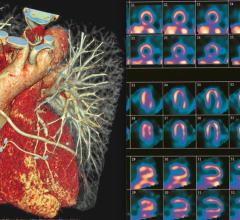
October 9, 2018 — Tracking just seven factors of heart attack patients when they are first admitted to the hospital can help flag those most at risk for 30-day readmission, researchers from UT Southwestern found.
The findings could help identify which patients may benefit from early interventions that allow them to recover at home and reduce costs for patients, insurers and healthcare providers, researchers with the UT Southwestern Center for Patient-Centered Outcomes Research determined.
“Identifying the most vulnerable patients is the first step to getting these patients the specialized care they need as they are transitioning from hospital to home, so that they are then able to make a full recovery at home instead of having to come back to the hospital,” said Oanh Nguyen, M.D., assistant professor of internal medicine with the Patient-Centered Outcomes Center.
Most prediction models for heart attack patients have poor to modest success identifying those most likely to be readmitted. Currently, nearly 1 in 6 patients with acute myocardial infarction (AMI), or a heart attack, have an unplanned hospital readmission within 30 days of being discharged – accounting for more than $1 billion in annual healthcare costs, according to the Journal of the American Heart Association study.1
“We found that a simple score, the AMI READMITS score, helps physicians accurately predict which patients hospitalized for heart attacks are at high risk of 30-day readmissions,” said Nguyen, who has a dual appointment in the Department of Clinical Sciences. “The AMI READMITS score is based on seven clinical and demographic factors that are readily available on all patients on the first day of their hospitalization.”
The seven READMITS factors, which can be tracked on the first day of hospitalization, are:
- Renal (kidney) function;
- Elevated brain natriuretic peptide (a marker for heart strain);
- Age;
- Diabetes mellitus;
- NonMale sex;
- Intervention with timely percutaneous coronary intervention (i.e., heart stents); and
- Low Systolic blood pressure.
“We hope that the score will help physicians and hospitals better tailor and improve the quality of care for patients during and immediately after a hospitalization for a heart attack,” she said. “Additionally, because the score is simple and easy to calculate, physicians can use it at the bedside to determine a patient’s risk of hospital readmission.”
The AMI READMITS score, which rated patients on their first day, did about as well as models that evaluated patients after their entire hospital stay.
But just because doctors can identify high-risk patients at the bedside early in their stay does not necessarily mean that interventions to reduce readmissions will work, said Nguyen. “That is the ultimate goal and something that we are actively working on.”
Researchers were able to use electronic health records to develop the seven factors. Of more than 800 acute myocardial infarction patients, about 13 percent resulted in an unplanned readmission within the 30-day period, researchers found. They then compared various prediction models to see which worked best.
Because hospitals are penalized for readmissions within 30 days after discharge, successfully predicting and treating those patients could help reduce the overall cost of care. This would save patients, insurers, and healthcare systems money and resources, and improve quality of life for these patients by allowing uninterrupted recuperation at home.
Future studies of the AMI READMITS score in regions and settings outside North Texas are needed to confirm the accuracy and usefulness of the score in other settings. Because the score was developed based on data from diverse hospitals and populations, the authors anticipate that their findings will be generalizable across many settings.
Nguyen is part of a growing trend of healthcare researchers in the field of population health, which examines practices across targeted populations to find the most effective strategies to improve healthcare delivery, reduce cost, save money and lower bills. The work was funded through a grant from the federal Agency for Healthcare Research and Quality (AHRQ) and was conducted with the support of the UT Southwestern Center for Patient-Centered Outcomes Research.
For more information: www.ahajournals.org/journal/jaha
Reference


 January 23, 2024
January 23, 2024 








